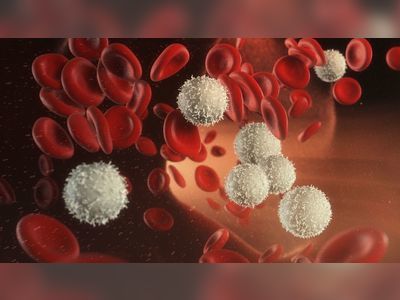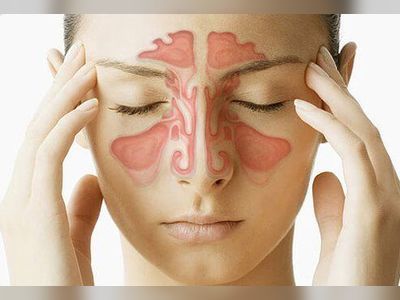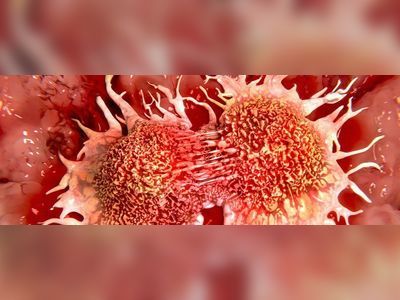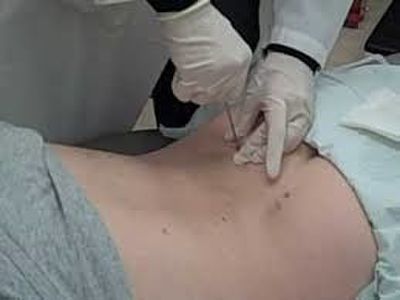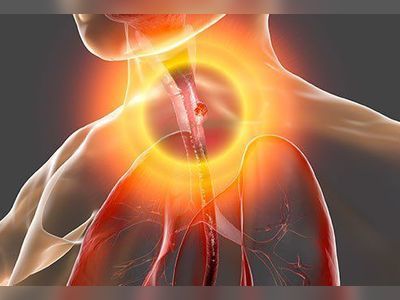
Migraine vs. Stroke
Facts you should know about migraines and strokes
A migraine headache is a type of headache that causes severe, intense, and throbbing pain on one side of the head.
A migraine “aura” describes visual, sensory, speech, motor, or other central nervous system symptoms that precede a migraine headache.
A stroke or "brain attack" occurs when a blood vessel in the brain is blocked, leaks, or bursts, which deprives brain cells of oxygen and they begin to die. The part of the body controlled by the damaged area of the brain loses function.
There are three types of strokes, transient ischemic attack (TIA, mini-stroke), ischemic, and hemorrhagic. The most common type of stroke is an ischemic stroke.
A migraine aura may resemble a transient ischemic attack (TIA, mini-stroke), and a headache that seems similar to a migraine may occur during a stroke.
Stroke and migraine symptoms that may be similar include:
Severe headache
Facial numbness
Numbness in the extremities or face
Dizziness
A main difference between the symptoms of migraine and stroke is that stroke symptoms come on suddenly while migraine symptoms tend to come on gradually.
Stroke symptoms that are different from migraine include:
Face drooping
Uneven or lopsided smile
Difficulty speaking or slurred speech
Sudden confusion or difficulty understanding speech
Sudden trouble seeing in one or both eyes
Sudden loss of balance or coordination, or trouble walking
Migraine symptoms that are different from stroke include:
Visual disturbances
Nausea or vomiting
Extreme sensitivity to sound/light/touch/smell
Tingling in the extremities
Stroke is a medical emergency. Immediate medical attention is necessary. Know the signs of a stroke and act FAST. FAST: Facial drooping, Arm weakness, Speech difficulties, Time to call 9-1-1
Migraine headaches can last between 4 to 72 hours and can be incapacitating.
In a very small population of people who suffer from migraines with specific symptoms, migraines may be related to a higher risk of stroke. The specific type of migraine associated with an increased risk of ischemic stroke is migraine with aura, a type of migraine that affects about one-quarter of all people with migraine headaches.
The cause of migraine headaches is not completely understood, but it is believed to be due to abnormal increases in levels of substances naturally produced in the brain, which causes inflammation. This inflammation causes blood vessels in the brain to swell and press on nearby nerves resulting in migraine symptoms. There may also be a genetic link to migraine headaches.
On a day-to-day basis, “triggers,” or factors that contribute to a migraine headache may cause migraines.
There is no cure for migraine headaches, but they can be managed with medications, lifestyle changes, and alternative treatments.
Blood thinners are the most common treatment for acute ischemic stroke. The “clot buster” drug used in emergency settings is called alteplase (Activase), also referred to as tPA (tissue plasminogen activator) must be administered within 3-4.5 hours (depending on the circumstance) of the onset of stroke symptoms for the best chance of recovery. Ischemic strokes also can be treated with intra-arterial blood thinners or clot retrieval devices.
Hemorrhagic strokes may require surgical removal of the blood clot, aneurysm clipping, coil embolization, or surgical arteriovenous malformation (AVM) repair along with stopping ant blood thinners.
What is a migraine headache?
A migraine is a group of neurological symptoms that typically include a severe throbbing headache, usually on one side of the head. Researchers and doctors do fully understand the causes of migraine headaches; however, most think that they may be caused by changes in the chemicals in the brain, which causes inflammation, or the condition may be genetic (inherited).
What is migraine with aura?
A migraine “aura” describes neurological symptoms that occur prior to a migraine attack. Symptoms of a migraine aura can include problems with:
Vision (wavy lines, spots in vision, or flashing lights)
Sensations (skin crawling or tingling or even strange smells)
Speech (stuttering)
Motor functions (twitching or weakness of arm or leg)
Migraine aura symptoms last just a few minutes and should not leave any lasting effects. It is common for aura symptoms to occur only on one side of the body (unilaterally) or one side of the visual field. After migraine aura symptoms resolve, usually a migraine attack or headache will occur.
Migraine aura symptoms and signs are very similar to stroke or transient ischemic attack (TIA, mini-stroke). If you think you or someone you know is having a stroke, remember “FAST.”
What is a stroke?
A stroke or "brain attack" occurs when a blood vessel in the brain is blocked, leaks, or bursts. This deprives brain cells of oxygen and they begin to die. The part of the body controlled by the damaged area of the brain loses function. A small stroke may only cause minor problems or temporary weakness or memory loss. A larger stroke can cause permanent paralysis or loss of ability to speak or in some individuals, death.
There are two main types of stroke:
Hemorrhagic stroke happens when a blood vessel leaks or bursts and there is bleeding into the brain tissue.
Ischemic stroke occurs when a blood vessel is blocked by a blood clot in the brain.
A “mini-stroke” (transient ischemic attack, TIA) is a type of ischemic stroke in which there is only temporary blockage of a blood vessel in the brain. Mini-stroke symptoms and signs only last a few minutes; however, it is still a medical emergency and 911 should be called.
Can the symptoms and signs of a migraine mimic those of a stroke?
It is possible for a headache that feels like a migraine to occur during a stroke. A migraine aura may resemble a transient ischemic attack (TIA), also called a “mini-stroke” (a temporary stroke that resolves symptoms quickly without residual or long-term disability).
Migraine headache symptoms and signs
Migraine attacks can last between 4 to 72 hours and can be incapacitating. Migraine is more than other types of headaches. It is a cluster of neurological symptoms that include:
Severe throbbing pain on one or both sides of the head
Visual disturbances
Nausea or vomiting
Dizziness
Extreme sensitivity to sound, light, touch, and smell
Tingling or numbness in the extremities or face
It also is possible for a migraine aura to resemble a transient ischemic attack (TIA).
Stroke symptoms and signs
Face drooping, facial numbness, uneven or lopsided smile
Arm weakness or numbness
Difficulty speaking or slurred speech
Sudden confusion or difficulty understanding speech
Sudden numbness or weakness of face or extremities, especially on one side of the body
Sudden trouble seeing in one or both eyes
Sudden dizziness, loss of balance or coordination, or trouble walking
Sudden severe headache with no known cause
Stroke is a medical emergency. Immediate medical attention is necessary. The American Heart Association and the American Stroke Association recommend you know the signs of a stroke and act FAST:
Facial drooping
Arm weakness
Speech difficulties
Time to call 9-1-1
Can migraines cause a stroke?
Migraine and stroke may occur at the same time, but a causal link has not been established. When an ischemic stroke occurs during a migraine attack, it is called a migrainous infarction.
Migraine and stroke risk factors
In a very small population of patients with specific symptoms, migraines may be related to a higher risk of stroke. Migraines may be a risk factor for stroke, in that strokes occur more frequently in people who have had migraines, but the strokes do not necessarily occur during migraine attacks. The specific type of migraine associated with an increased risk of ischemic stroke is migraine with aura, a type of migraine that affects about one-quarter of all migraine patients. Moreover, women who have migraine with aura are at a greater risk for stroke than women without migraine, or even men who experience migraine with aura.
People with migraines at highest risk for stroke are those who also have traditional risk factors for stroke such as high blood pressure, diabetes, high cholesterol, smoking, and obesity.
What triggers or causes migraines and strokes?
Migraine triggers and causes
The cause of migraines is not completely understood, but it is believed to be due to abnormal increases in levels of substances naturally produced in the brain, which produce inflammation that causes blood vessels in the brain to swell and press on nearby nerves resulting in migraine symptoms. There may also be a genetic link to migraines.
On a day-to-day basis, migraine triggers or factors (environmental, chemical and many others) contribute to a migraine attack, but are not triggers for stokes.
Common migraine triggers include:
Bright lights, loud noises, or strong odors
Stress or anxiety
Hormonal changes
Caffeine
Alcohol
Irregular sleep
Missing a meal
Certain foods that contain nitrates, MSG (monosodium glutamate), or tyramine
Artificial sweetener (aspartame)
Changes in weather
Stroke causes
A blood vessel in the brain is blocked, leaks, or bursts causes a stroke. This deprives brain cells of oxygen and they begin to die. The part of the body controlled by the damaged area of the brain loses function.
What are the treatments for migraines and strokes?
Migraine treatment
There is no cure for migraine, but the headaches can be managed with:
Medications for acute treatment include over-the-counter (OTC) pain relievers such as aspirin, acetaminophen (Tylenol), or nonsteroidal anti-inflammatory drugs (NSAIDs) such as ibuprofen (Advil, Motrin); triptans; and ergot derivatives
Medications to prevent an attack include antidepressants, anticonvulsants, beta-blockers, calcium channel blockers (CCBs), and hormone therapy (in women whose migraines are linked to their menstrual cycle).
Lifestyle changes include avoiding known migraine triggers, maintaining a healthy balanced diet, regular exercise, limiting caffeine and alcohol, and stress reduction techniques.
Biofeedback, acupuncture, and counseling may also help.
Stroke treatment
Stroke is a medical emergency. If you have stroke symptoms, call 9-1-1 and get medical attention immediately.
It is important to CT scan the patient’s brain to diagnose an ischemic stroke from a hemorrhagic stroke because the emergent treatments are very different.
Blood thinners are the most common treatment for acute ischemic stroke. The “clot buster” drug used in emergency settings is called alteplase (Activase), also referred to as tPA (tissue plasminogen activator) and it must be administered within 3-4.5 hours of the onset of stroke symptoms (depending on the circumstance) for the best chance of recovery. Patients who cannot receive tPA may receive blood thinners such as aspirin and clopidogrel. Some stroke patients also may need, or benefit from, intra-arterial blood thinners or clot retrieval devices.
Patients with carotid artery disease may get a carotid endarterectomy or carotid artery angioplasty to open blocked carotid arteries.
Hemorrhagic strokes may be treated by taking patients off antiplatelet medicines and blood thinners to reduce bleeding. Patients with high blood pressure may receive antihypertensive drugs to lower blood pressure. Surgery such as aneurysm clipping, coil embolization, or arteriovenous malformation (AVM) repair may be needed to treat hemorrhagic stroke.






